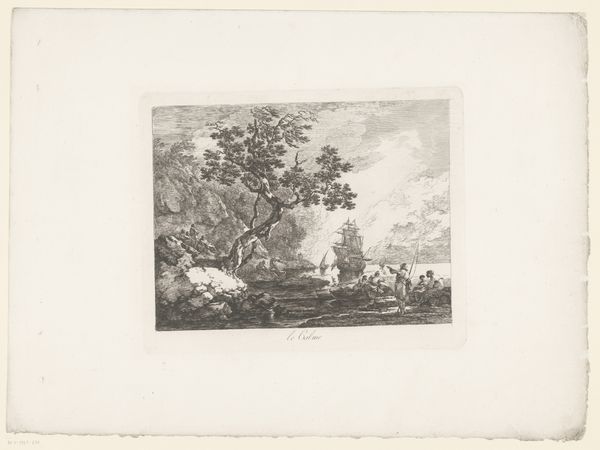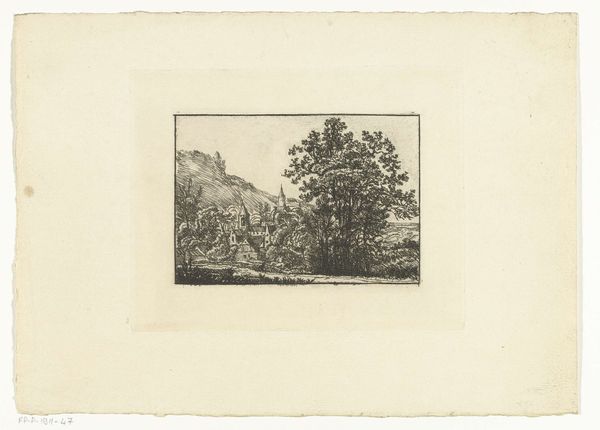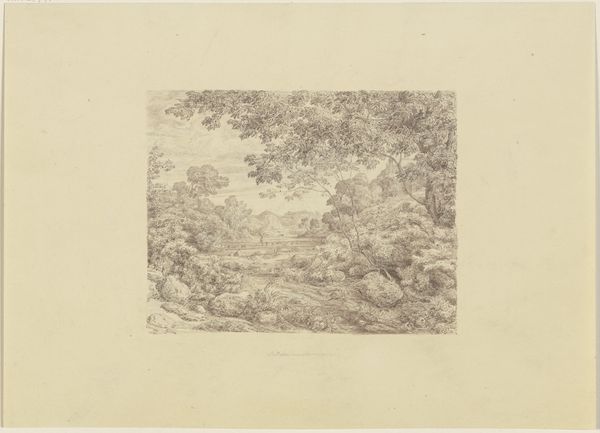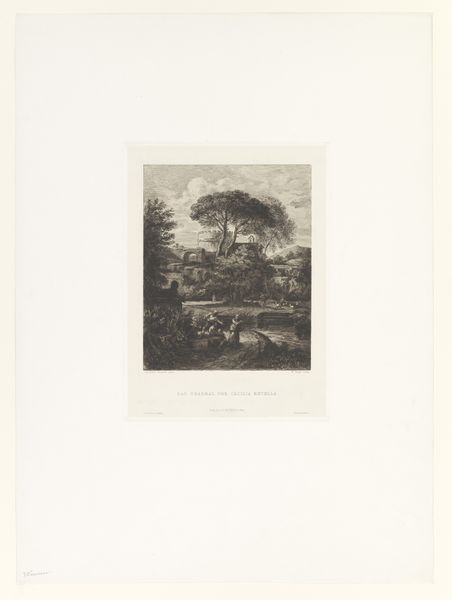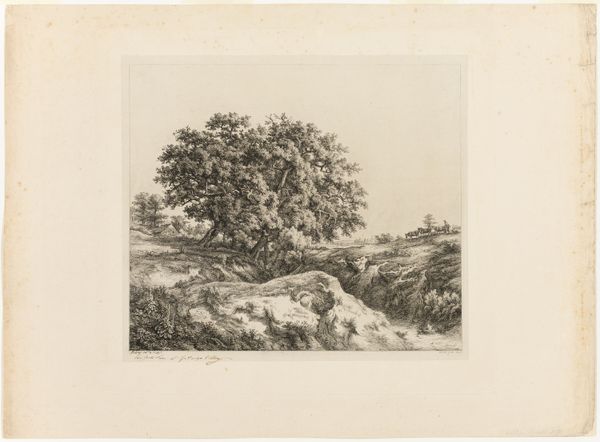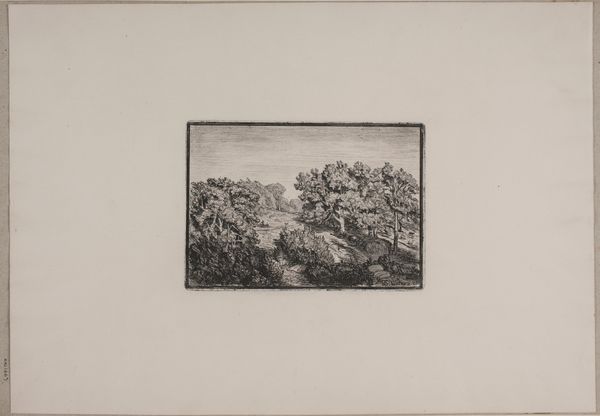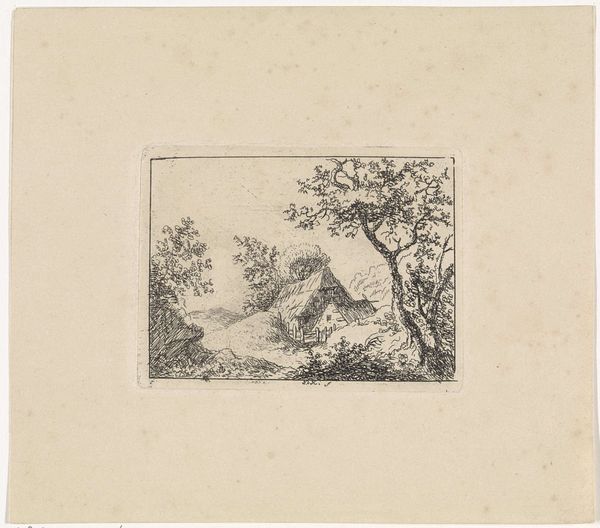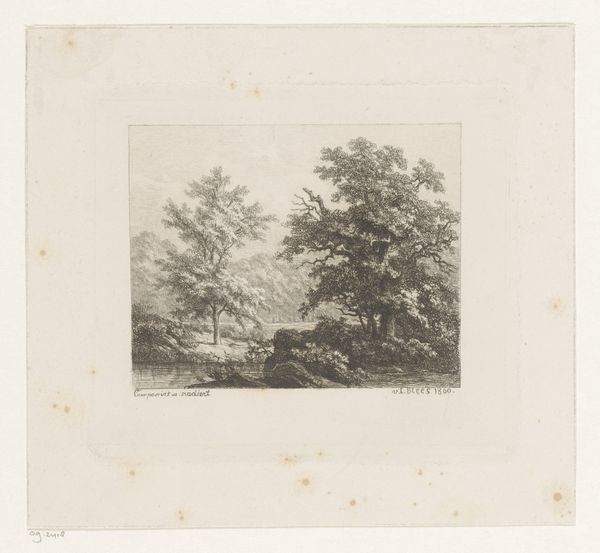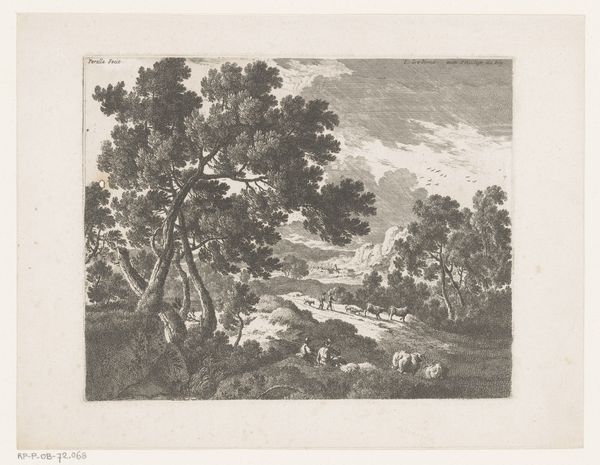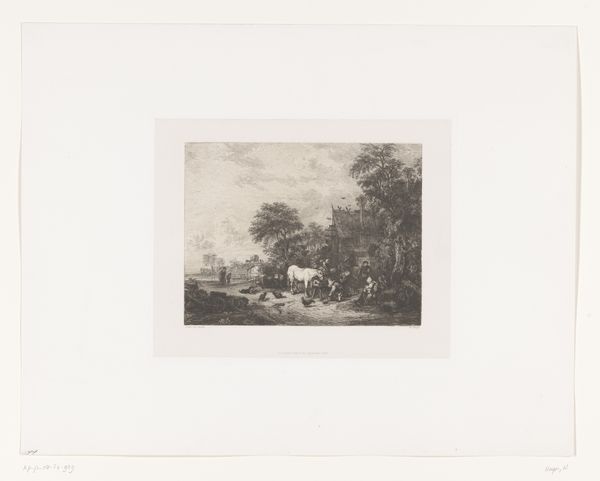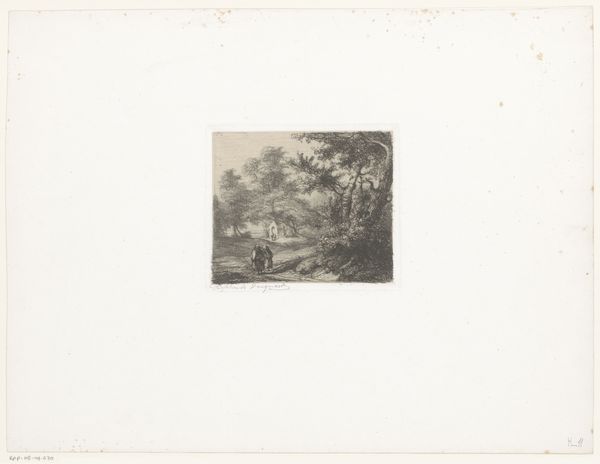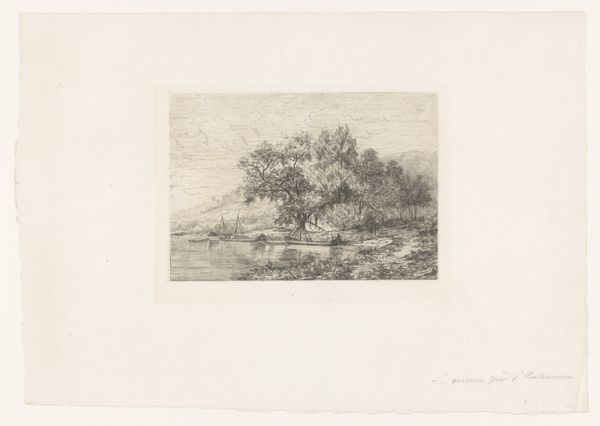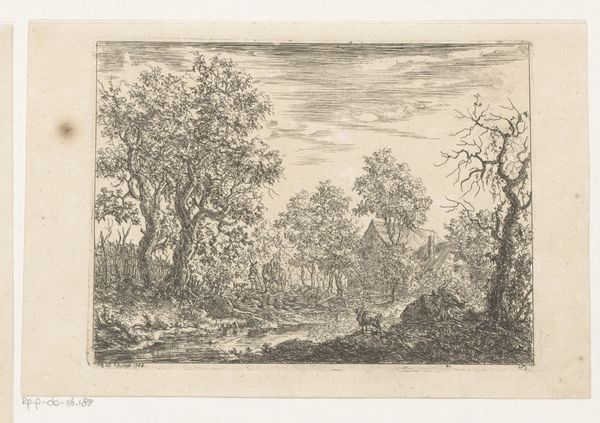
drawing, print, etching, paper, engraving
#
drawing
# print
#
etching
#
old engraving style
#
landscape
#
paper
#
engraving
#
realism
Dimensions: height 160 mm, width 222 mm
Copyright: Rijks Museum: Open Domain
Editor: Here we have "Landscape with House by a River," a work by Johannes Arnoldus Boland, made sometime between 1860 and 1900. It's an etching on paper, with that lovely, slightly hazy quality you get from engravings. It feels… peaceful, almost melancholic, looking at this quiet scene. What do you see in this piece? Curator: Oh, melancholy, definitely! For me, this little etching sings of solitude and reflection. Imagine wandering into this scene – the quiet murmur of the river, the almost theatrical placement of the trees framing that humble dwelling. I think of 19th-century Romanticism and the search for sublime experiences in nature. Do you sense a story being whispered, rather than shouted? Editor: I do! It feels like a captured memory. It’s interesting you mention Romanticism – I was caught by the sort of ‘untouched’ quality. Do you think there’s any commentary being made by focusing on the simplicity of this scene? Curator: Perhaps a longing for simpler times? Remember, the 19th century was a time of tremendous upheaval. Industrialization was changing the landscape – both literally and figuratively. This tiny scene could be a yearning for a world less touched by that chaos, a return to a kind of innocence. What grabs your attention the most, technically speaking? Editor: The details, I think, considering it's an etching. Look at the textures of the trees! And the reflection in the water. It’s amazing what Boland achieved with such fine lines. I hadn't really considered the broader context until now. It makes me see the picture in a totally different light. Curator: Exactly! It transforms a nice little picture into a mirror reflecting deeper longings and historical realities. It’s amazing how a deeper understanding can shift our experience of art, isn't it? Editor: It really is. Thanks, that was insightful.
Comments
No comments
Be the first to comment and join the conversation on the ultimate creative platform.
